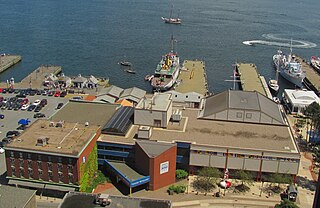
The Maritime Museum of the Atlantic is a maritime museum located in downtown Halifax, Nova Scotia, Canada.
The Baron de Hirsch Cemetery, also known as the Beth Israel Synagogue Cemetery, is a Jewish cemetery located on west side of Windsor Street at the intersection of Connaught Avenue beside Fairview Cemetery in the city of Halifax, Nova Scotia, Canada. It has been the burial ground of the congregation of the Beth Israel Synagogue of Halifax since 1893.

Mount Olivet Cemetery is a Roman Catholic cemetery located in Halifax, Nova Scotia, Canada at which 19 bodies recovered from the RMS Titanic are buried.

SS Atlantic was a transatlantic ocean liner of the White Star Line that operated between Liverpool, United Kingdom, and New York City, United States. During the ship's 19th voyage, on 1 April 1873, she struck rocks and sank off the coast of Nova Scotia, Canada, killing at least 535 people. It remained the deadliest civilian maritime disaster in the North Atlantic Ocean until the sinking of SS La Bourgogne on 2 July 1898 and the greatest disaster for the White Star Line prior to the loss of Titanic in April 1912.

Isidor Straus was a Bavarian-born American Jewish businessman, politician and co-owner of Macy's department store with his brother Nathan. He also served for just over a year as a member of the United States House of Representatives. He died with his wife, Ida, in the sinking of the passenger ship RMS Titanic.

Deadman's Island is a small peninsula containing a cemetery and park located in the Northwest Arm of Halifax Harbour in Nova Scotia, Canada. The area was first used as a training grounds for the British military, and later became a burial ground for dead prisoners of war from nearby Melville Island. In the early 1900s the site became an amusement park before being annexed to the city of Halifax in the 1960s. Though development projects were considered for the site, these plans met with popular protest, and instead Deadman's Island became a heritage park, Deadman's Island Park.

The Unknown Child refers to the initially unidentified body of Sidney Leslie Goodwin, a 19-month-old toddler who was recovered by the Mackay-Bennett after sinking of the RMS Titanic. For almost a century, Goodwin's gravestone in the Fairview Cemetery read "Erected to the memory of an unknown child whose remains were recovered after the disaster to the Titanic April 15th 1912".
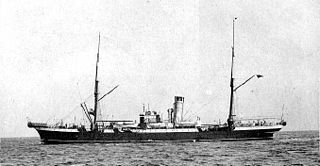
CS Mackay-Bennett was a cable repair ship registered in London, England, owned by the Commercial Cable Company. The ship is remembered for being the ship that recovered the majority of the bodies of the victims of the Titanic sinking.

Michel Marcel Navratil, Jr. was one of the last survivors of the sinking of Titanic on 15 April 1912. He, along with his brother, Edmond (1910–1953), were known as the "Titanic Orphans", having been the only children rescued without a parent or guardian. He was three years old at the time of the disaster.
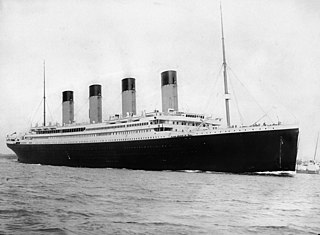
A total of 2,208 people sailed on the maiden voyage of the RMS Titanic, the second of the White Star Line's Olympic-class ocean liners, from Southampton, England, to New York City. Partway through the voyage, the ship struck an iceberg and sank in the early morning of 15 April 1912, resulting in the deaths of 1,496 people, including about 815 of the passengers.

The crew of the RMS Titanic were among the estimated 2,208 people who sailed on the maiden voyage of the second of the White Star Line's Olympic class ocean sea liners, from Southampton, England to New York City in the US. Halfway through the voyage, the ship struck an iceberg and sank in the early morning of 15 April 1912, resulting in the deaths of over 1,500 people, including approximately 688 crew members.

Louise Kink Pope was one of the last remaining survivors of the sinking of the RMS Titanic on April 15, 1912.

RMS Titanic was a British passenger liner operated by the White Star Line that sank in the North Atlantic Ocean in the early morning hours of April 15, 1912, after striking an iceberg during her maiden voyage from Southampton to New York City. Of the estimated 2,224 passengers and crew aboard, more than 1,500 died, making the sinking one of modern history's deadliest peacetime commercial marine disasters. RMS Titanic was the largest ship afloat at the time she entered service and was the second of three Olympic-class ocean liners operated by the White Star Line. She was built by the Harland and Wolff shipyard in Belfast. Thomas Andrews, chief naval architect of the shipyard at the time, died in the disaster.
William Denton Cox was a third class steward aboard RMS Titanic who died while bringing groups of third class passengers to lifeboats during the sinking.

Monuments and memorials to the RMS Titanic victims exist in a number of places around the world associated with Titanic, notably in Belfast, Liverpool and Southampton in the United Kingdom; Halifax, Nova Scotia in Canada; and New York City and Washington, D.C. in the United States. The largest single contingent of victims came from Southampton, the home of most of the crew, which consequently has the greatest number of memorials. Titanic was built in Belfast, Northern Ireland, and had a "guarantee party" of engineers from shipbuilders Harland and Wolff aboard all of whom were lost in the disaster and are commemorated by a prominent memorial in the city. Other contingents of engineers aboard the ship came from the maritime cities of Liverpool in England and Glasgow in Scotland, which erected their own memorials. Several prominent victims, such as Titanic's captain, were commemorated individually. Elsewhere, in the United States and Australia, public memorials were erected to commemorate all the victims.
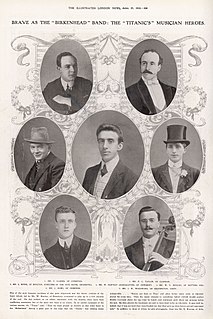
The musicians of the RMS Titanic all perished when the ship sank in 1912. They played music, intending to calm the passengers, for as long as they possibly could, and all went down with the ship. All were recognized for their heroism.
RMS Titanic has a rich legacy in films, books, memorials and museums.
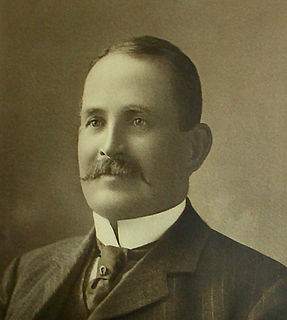
George Henry Wright was a significant business man and philanthropist in Halifax, Nova Scotia. He was born at Wright's Cove, Nova Scotia and died in the sinking of the Titanic at the age of 63. He established Write's World Business Directory in Boston and later returned to Halifax and invested in the city. His own house at 989 Young Ave, and two of his public buildings, the Marble Wright Building and The Saint Paul Building, still stand in downtown Halifax. They were all built by architect James Charles Philip Dumaresq.
Roderick Chisholm was a Scottish shipbuilder. He co-designed the RMS Titanic with Thomas Andrews. He died when the Titanic sank on her maiden voyage.















